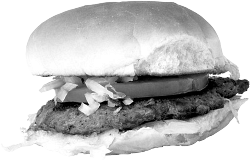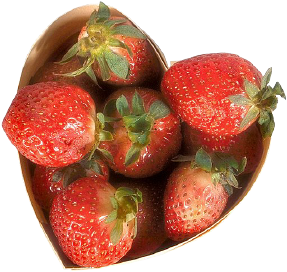
The ill consequences of our couch potato culture aren’t limited to flabby abs and saggy triceps. All the homogenized foods that comprise the bulk of our diet have gradually eroded our “tasting muscles,” too.
Never knew you had tasting muscles? You’re not alone. I am just now discovering them from several pieces of evidence that have come my way.
- First, I made a couple recipes that I developed a couple years ago. I distinctly remember liking them at the time, but was disappointed in their lack of flavor when I revisited them. Seems my tasting muscles had grown to desire more and fuller flavors.
- Next came a wardrobe makeover. Seems totally unrelated but hear me out: My first exercise was holding up each item in my wardrobe to see if it was complimentary or not. After the first few tries I was completely frustrated. “Why can’t I tell the difference between complimentary and awful?” I complained to my personal “closet transformation” expert. “Be patient,” she told me. “Over time you build the ‘muscle’ to distinguish between the two.” Sure enough, over a year or so, I developed the ability to see how her color choices were just right for me, and why my former black and white wardrobe was all wrong (even if it was convenient.)
- The final piece of the taste puzzle came from our Whole Kitchen Meal Making Classes over the last year. We do a lot of tasting and evaluating in those classes. We taste dishes with a little spice and more spice, we taste vegetables cooked al dente and on the softer side, we taste with and without a sprinkling of lemon, and we taste dishes that could use a little work and decide what to do with them. While these exercises are very empowering for class members, they also reveal how we often lack the skill–or muscle–to wield this newfound power.
Piecing together these pieces of evidence has led me to a theory: Could we have been spoon fed processed and prepared foods for so long that we’ve lost the ability to discern tastes, know which ones we like, and play with them to suit us?
One of the “greatest” food innovations in the last few decades has been the ability to homogenize foods across vast regions, so you can experience the same Big Mac flavor whether you are in Paris, Beijing or Denver. While eliminating all risk from a food outing has some advantages, there are plenty of disadvantages, too, like being unable to savor the magnificent array of tastes that lie outside the narrow, “processed foods bandwidth.”
But why bother training and building our tasting muscles to savor the flavors of the rainbow if we can just be spoon fed processed and packaged foods? Because, simply put, those processed and packaged foods are killing us! And we all know those sugar-laden yogurt cups, energy (a/k/a candy) bars, diet sodas and frozen meals are wreaking havoc on our bodies!
Not only do we know this, most of us would love to replace those havoc-wreaking foods with vegetable-rich meals filled with whole grains, nuts, beans and lean proteins. That can’t happen, however, as long as we’re slaves to our flabby tasting muscles. Having been stunted and malformed by a homogenized diet, those muscles won’t allow us to venture forth and relish and be happy with the taste of real, wholesome, healthful foods.
Sure we could go on a “diet,” forcing ourselves to eat just salads, dried out chicken breasts and toast with half a teaspoon of butter. That route is no fun at all, however, which explains why “diets” routinely fail. Who wants to live in a way that isn’t deeply pleasurable?
Alternatively, we could develop our tasting muscles to delight in the goodness and taste of real foods. Trust me, there is a miracle waiting to be experienced here. Local, seasonal foods produced with care are magnificent–if your tasting muscles have been let loose to love them. Learn what flavors make you feel good and how to apply those flavors in ways that make you feel deeply satisfied and happy with a meal. Very quickly, you’ll no longer want the security of bland, homogenized, processed foods. Instead you’ll want all the pizzazz and rewards of adventurous–and far more healthful–real foods meals.
Want to begin developing your tasting muscles? Ready to begin challenging your taste buds with new, pleasurable flavors? Join any of our cooking classes or demos and open the door to a lifelong tasting adventure and all its delicious rewards.
Take It From the Expert
“[Our] fast-paced, fast-food, fast-exercise lifestyle closes a doorway of perception that decreases our pleasure threshold. We become acclimated to low-health, low-pleasure, mass-produced food. Our pleasure vocabulary decreases and we live, unaware, in a world in which our experience of joy never measures up to its true potential.”
Marc David, The Slow Down Diet, Eating for Pleasure, Energy, & Weight Loss
Marc is a nutritionist and eating psychologist who has researched and written extensively on the possibility of pleasure in eating to transform and improve metabolism. Listen to my interview with Marc on the importance of Vitamin P(pleasure) in our diet.

1 thought on “Building Your “Tasting Muscles”–and Putting Them to Good Use”